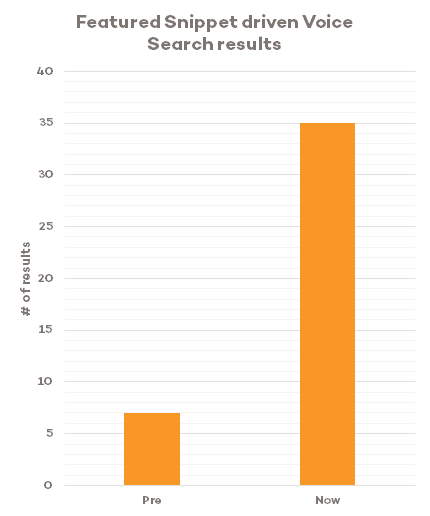Let’s look at the stats. Research by Mindshare shows that 60% of smartphone users have used voice search, and 62% of those primarily use it for online search. So how do search engines determine the best result to give back to a voice search user? Well, they use direct answers and featured snippets.
So let’s look closer at an example for our client Anglian Home Improvements.
Anglian had three product FAQ areas for Conservatories, Doors, and Windows. All Q&A pages sat on a single page at a single URL; Anglian was answering multiple questions on a single page, which isn’t a great user experience, as not all of the questions were that closely related.
If Google’s job is to serve up the best answer for the query, why would it rank and serve up a ‘catch all’ page that doesn’t answer any question particularly in-depth?
Our solution was a dedicated product FAQ area, or ‘clinics’. The single page clinics were expanded into product specific clinic areas consisting of 39 or more pages.
Each of these clinics now consists of a hub which then links out to a dedicated page per each question and answer, and each answer was expanded - going from under 50 word answers to around 300 or more word answers.
The page templates were created with leveraging featured snippets in mind - the headings and subheadings posed the question, followed by succinct answers.
We gathered information on the most searched for terms from a variety of sources, and optimised the content towards these.
So what was the result?
We saw a huge increase in visibility as a result of this strategy.
Previously, clinic pages averaged one enquiry per month – now they drive 13 enquiries per month, a significant increase considering the intent at this point.
Optimising for featured snippets not only allows Anglian to appear twice on the first page for a result, but it also allows them to become the voice search answer.
Anglian’s featured snippets now trigger for a large proportion of queries due to their nature; and it’s a totally scalable structure which we can easily adapt and add to, instead of trying to cram more and more Q&A’s into a single catch-all page.

